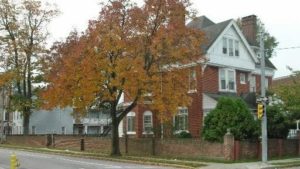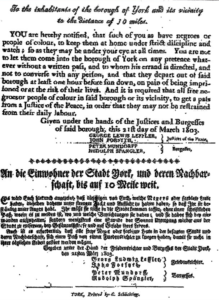York’s Jewish community’s story begins before American Revolution
Jewish Community Center
200 Hollywood Drive, York, Pa.
The situation
The haunting and memorable “The Six Million” sculpture at York’s Jewish Community Center is built around a perspective that could be missed.
Internationally known sculptor Don Briddell made that point to an audience at a Passover Haggadah early in 2025. That is, the sculpted images are marching from history with lessons from the past, rather than walking to their deaths in Nazi concentration camps.
According to a JCC description, they are stepping forward “from the darkness and horror of the past into the light of our world today. Their faces are familiar, carved from photographic likenesses of those who died in the Holocaust. Hopeful and expectant, they portray the powerful strength of the human spirit – old relatives and friends coming to meet us again, after many long years of separation.”
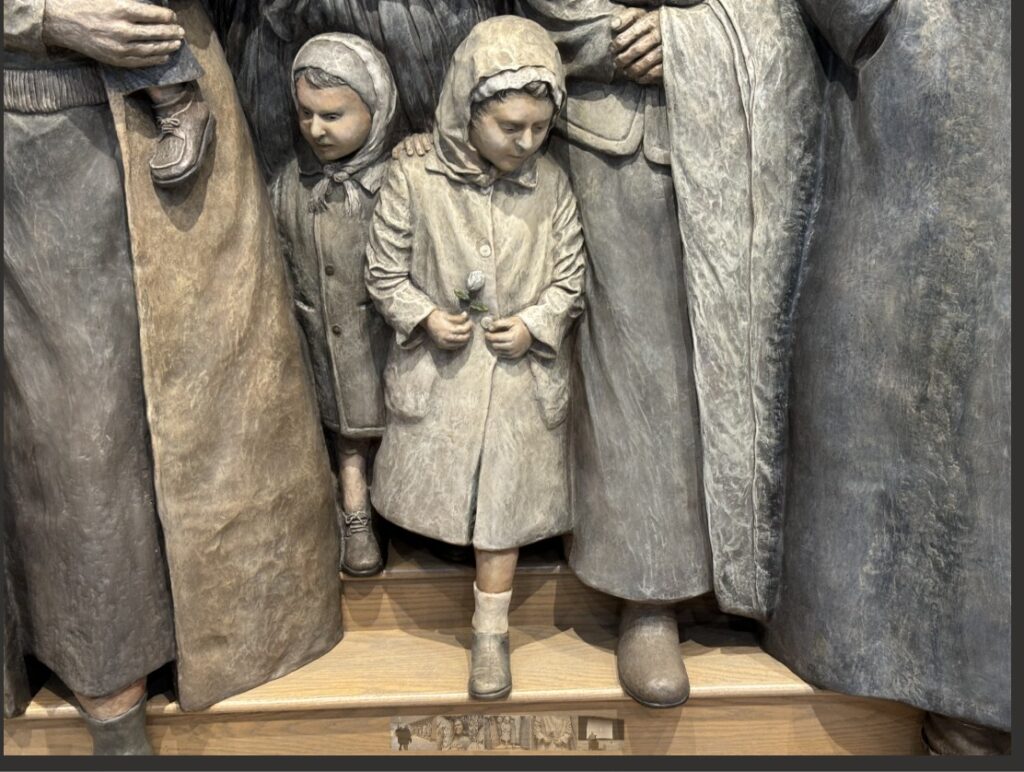
“As we stand before them,” the description continues, “we must ask ourselves whether we are ready to greet them in good faith. Has our world changed since the dark days of that terrible legacy? Have we abolished hatred, prejudice and intolerance? Can we say with confidence, ‘Never again’?”
Briddell produced the 20-foot by 9-foot Holocaust memorial, unveiled in May 1997, using molded in clay, cast in resin and then painted.
The sculpture has become a York County landmark and a integral part of county Jewish community. Its unveiling appears on a timeline of significant moments in Jewish community history.
The witness
Let’s call that timeline a project undergoing construction. The late York Sunday News columnist Gordon Freireich constructed this timeline of the Jewish community’s story in 2020 upon a request from James McClure, one of WitnessingYork.com operators. WitnessingYork.com and Iris Katz have since added to Freireich’s framework.
So, here is that brief but growing timeline of York County Jewish history:
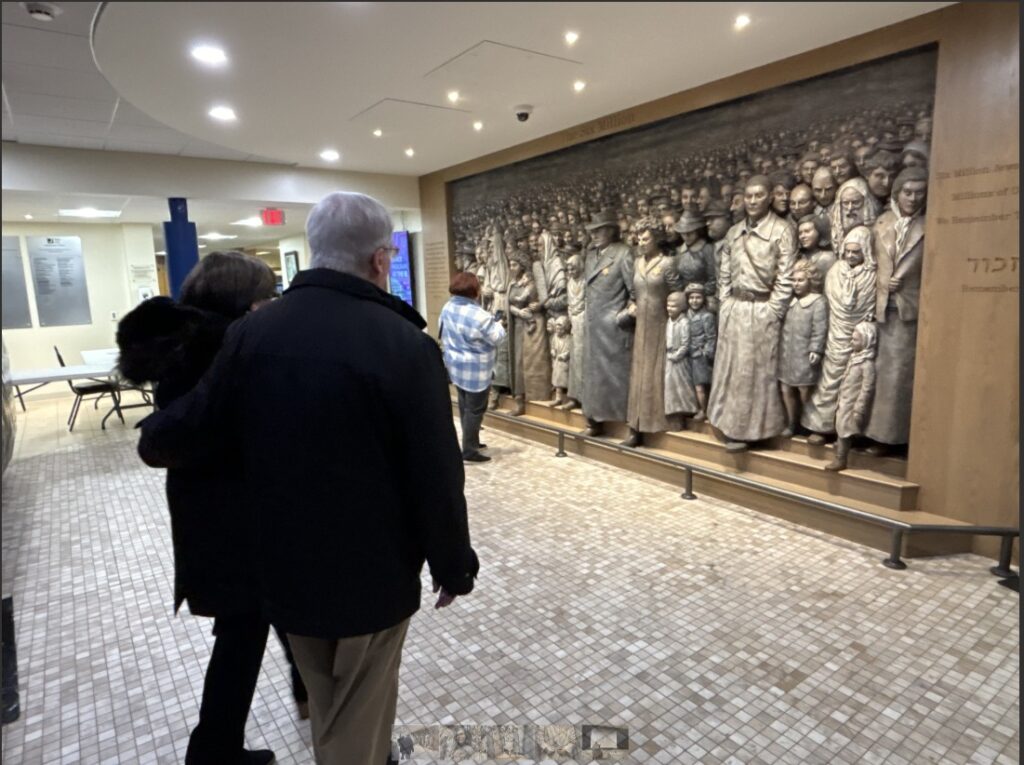
1756 – Merchant Elijah Etting married Shinah Solomon of Lancaster and moves to York. Their home and store are believed to have been in the second block of West Market Street. Shinah is noted as a welcoming hostess to visitors and is specifically mentioned in British Capt. Alexander Graydon’s travels to America.
1780 – Elijah Etting dies in 1778 and Shinah moves her family to Baltimore, then known as a center of Jewish identity and culture. One of her sons, Solomon Etting, would be responsible for writing the “Jewish Laws” in Maryland, which prohibit discrimination of public office holders based upon religion.
1820 – Bavarian Jews arrive in Hanover. The Hanover Hebrew Congregation, on 2nd Street, was established many years later, in 1941 and exists there today.
1847 – After an absence of almost 70 years, Jews from Germany begin arriving in York City. A number of the new arrivals were merchants and established stores in the community.
1877 – The Hebrew Reformed Congregation (later Temple Beth Israel) is formed.
1883 – An Orthodox Jewish congregation is formed, later to be renamed Ohev Sholom, in 1902. It becomes a Jewish Conservative congregation in 1953.
1900 – Adas Israel, another Orthodox Jewish congregation is formed.
1903 – Adas Israel builds a small synagogue on Pershing Avenue (then Water Street) not too far from Penn Common.
1904 – Ohev Sholom constructs a synagogue on the corner of Princess Street and Pershing Avenue, just a bit farther north of Adas Israel. (Both buildings were demolished in the 1960s to make room for an expanding William Penn Senior High School.)
1907 – Temple Beth Israel is dedicated in the second block of South Beaver Street.
1910 – Young Men’s and Young Women’s Hebrew Association is formed, later to be renamed the York Jewish Community Center (JCC). The first meeting location is in a room above the Edison Light Company at 27 W. Market St. At this time, three distinct Jewish congregations met in York. The JCC provided a place – a common ground, as one JCC said – where Jewish people from all three congregations could come together.
1925 – The York JCC opens a permanent home at 36 S. Queen St. In 1920, JCC members met at the Rothert building, west side of the first block of South George Street. In 1922, the JCC moved to the Dale Pharmacy building, 45-49 South George Street.
1941 – The Hanover Hebrew congregation forms. Its Facebook page states that it is one of the smallest Conservative Jewish congregations in the United States.
c. 1941 – In World War II, the York County community worked to maintain its routines – its institutions Boy Scout Troop 37, with Rabbi Alexander D. Goode in leadership, was made up of Jewish, Catholic and Protestant Scouts.
1942-43 – Rabbi Alexander D. Goode resigns the pulpit at Temple Beth Israel to become a military chaplain. He and three other clergymen die in the sinking of the troop transport Dorchester by a Nazi submarine in February 1943 and are forever immortalized as “The Four Chaplains.” The Philadelphia-based Chapel of the Four Chaplains was instituted in their memory. In York, an annual breakfast is held to remember the four clergymen, and a mural was unveiled on York’s West Market Street in 1998 in honor of Four Chaplains.
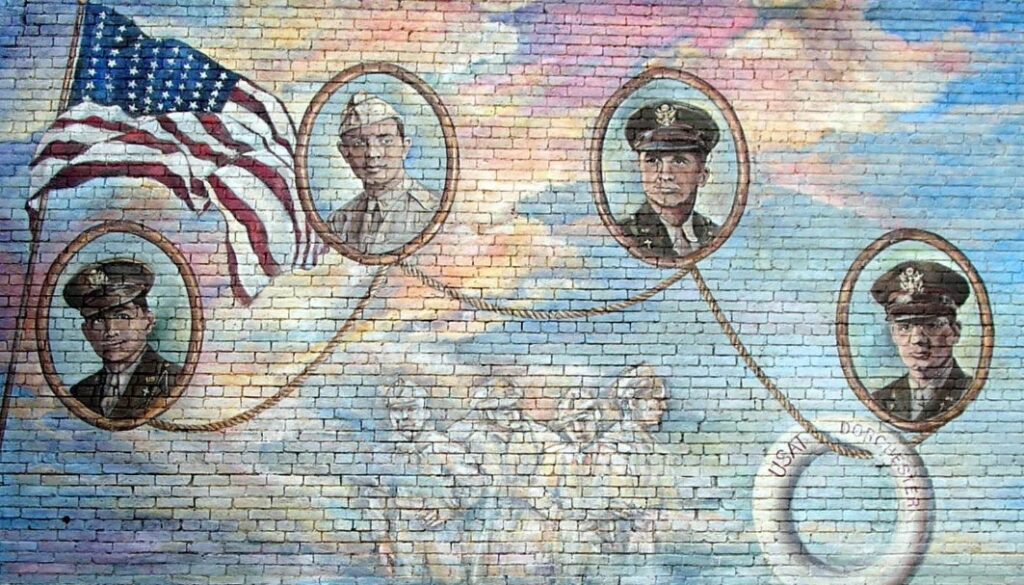
1952 – The JCC moves to the former YWCA at 120 E. Market St. “You can tell you’re a long-time member of the Jewish community,” Gordon Freireich wrote in 2020, “if you thought the East Market Street rooftop playground area was the neatest place in town.”
1952 – Forty children are enrolled in the JCC nursery school at the new center, 120 E. Market St., York.
1962 – Temple Beth Israel moves from Beaver Street to Hollywood Drive. (Later Adas Israel would move into the former TBI location. Still later, as its membership dwindles, it would merge with Ohev Sholom.)
1966 – Work was completed on the Temple Beth Israel on the Hollywood Drive campus that included a religious school wing, auditorium and social facilities.
In 1962, construction of the present facility was begun on Hollywood Drive with the building of the Religious School wing, the auditorium, and the social facilities. The Samuel and Clara Lebovitz Sanctuary became known as the “Jewel on the Hill,” its hexagonal design suggesting, according to a congregational history, “a crown of jewels resembling the facets of a diamond enhanced by richly stained glass.”
1968 – Ohev Sholom Congregation moves to a new building on Eastern Boulevard.
1989 – The York Jewish Community Center opens a new building on Hollywood Drive next to Temple Beth Israel. Today, the non-profit community center welcomes York County’s diverse population, regardless of religion, financial or ethnic background. “Since 1910,” the JCC’s website states, “the JCC’s role has changed and expanded to reflect the current times.”
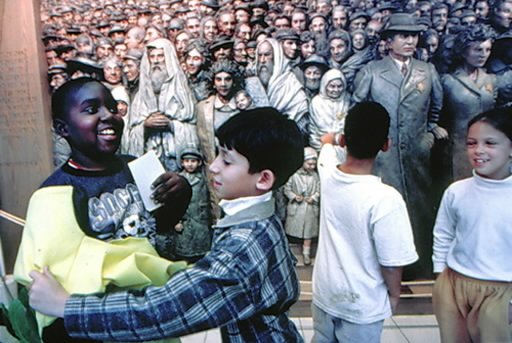
1989 – With Alan Dameshek and Joan Krechmer in the lead, Jewish Family Services formed to provide support to York’s Jewish community. In 2021, JFC later becomes Family Services of York, part of the JCC
1993 – Gordon Freireich, former York Sunday News editor, and Allan Dameshek, former York Jewish Community Center director, led group that launched the Four Chaplains Memorial and Four Chaplains Breakfast in York, held on thee 50th anniversary of the death of The Four Chaplains, including York Rabbi Alexander D. Goode.
1997 – “The Six Million” sculptor, from the hands of Don Briddell, is unveiled in the lobby of the Jewish Community Center and quickly becomes the centerpiece of this community social and recreational hub.
2003 – Ohev Sholom sells its building on Eastern Boulevard. It will eventually hold services in the TBI building and at the York JCC.
2010 – The York JCC celebrates its 100th anniversary. To summarize, JCC members have met since 1910 at 27 W. Market St.; 1920 South George St., 45-49 S. George St., 36 S. Queen St., 120 E. Market St. and, on its century anniversary, at 200 Hollywood Drive in York Township.
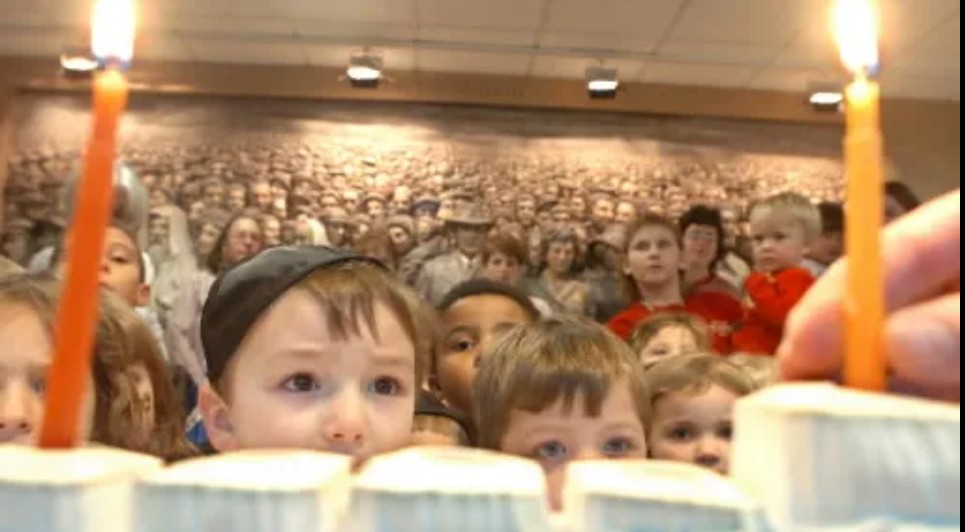
2015 – The JCC expandeds with a 17,000-square-foot addition to the wellness center and ECE wing. Other openings have taken place over the year. In 2024, for example, the JCC opened PlaySpace for programs and serves and part of the Center for Learning and Play.
2018 – Doris and Bernard Gordon Center for Jewish Student Life is developed at York College and is home to the college’s Hillel organization.
2021 – Virtual programs offered during COVID. The entrance and security is upgraded and security was again upgraded in 20-25.
2022 – The JCC pool reopens after a seven-month closure for renovations and enhancements.
2023 – Melody Davis becomes the rabbi for Temple Beth Israel and Ohev Sholom congregations. Rabbi Davis is the most recent of 17 rabbis who have served Temple Beth Israel. Since 1957, Rabbis Eli Cooper (1957-1973), Irwin Goldenberg (1973-2008), Rabbi Jeffrey Astrachan (2008-2022) and Rabbi Davis.
2024 – Community leaders unveil plans to erect a Four Chaplains Memorial near the Gold Star Healing & Peach Garden in York’s Memorial Park. In addition to Rabbi Alexander D. Goode and the three other Army chaplains who died in 1943, the memorial will include Coast Guardsman Charles W. David Jr., who rescued survivors from the sinking troop transport Dorchester. Some of those David helped save might owe their lives to Rabbi Goode and the other chaplains who ran order aboard the sinking Dorchester.
2025 – After historian Gordon Freireich died in 2025, a group of volunteers started meeting to locate and identify archives relating to the histories York County’s Jewish community, the JCC and Temple Beth Israel and other congregations. The group developed this Facebook page: York County Jewish History.
2025 – The JCC’s Jewish Life and Culture Department conducted the first “Path to Freedom: Liberation Seder.”
2025 – The JCC’s well-established adult program “Tuesday Club” gains a new name: “Tuesday Connection.”
Hometown History’s Jamie Noerpel and Dominish Marie Miller tell the story of Alexander D. Goode and the Four Chaplains at Temple Beth Israel.
The questions
When you first viewed “The Six Million” sculpture at York’s JCC, how did you interpret the sculpture? Did you see the sculpted figures as on their way to a deadly concentration camp or emerging from the past to meet us today (the sculptor’s intention)? The power of a skillfully made art piece is captivating, isn’t it? What do you consider the most powerful piece of art in York County and the region?
Related links: On the hunt for documents telling JCC’s, York County PA Jewish history. Photos: Top 2 photos, Jim McClure; bottom 2 photos, York Daily Record.
— By JAMIE NOERPEL and JIM McCLURE

